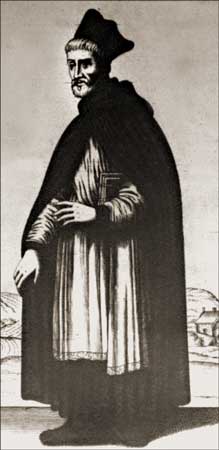Wroxton Abbey was where Charles I and Henrietta Maria spent the night after they were joyously reunited following a fifteen month separation, as the Queen had journeyed abroad to raise arms and money. As its name bears witness, the house was once an Augustinian monastery. According to the Wroxton Abbey website:
Wroxton is one of the 13,418 places listed in the 1086 Domesday Book, ordered by William the Conqueror as the first modern assessment for taxation. In 1089 Guy de Reinbeudcurt, the Lord of Chipping Warden, was the owner of the Wroxton manor lands. By 1120 the estate, now taxed at the rate of 17 hides, passed to his young son Richard. Upon his death the estate passed to his daughter Margery and her husband Robert Foloit.
In 1173, when Robert became a monk, his son Richard inherited the property. The Wroxton property, along with the entire barony of Chipping Warden, was inherited by Wishard Ledet in 1203 when he married Richard’s daughter Margaret. Wishard’s daughter Christine then held the estate until she died a very old woman in 1271.
Her great granddaughter Christine took the Wroxton part of the Chipping Warden estate and married Sir John Latimer. At this point history loses sight of the Wroxton ownership. What is known, however, is that during the early part of the 12th century, members of the Belet family were tenants at the Wroxton manor property. Harvey was the first of the Belets to hold the tenancy. His son Michael was the hereditary butler to King Henry II. The estate, and the office of Royal Butler, passed to his son Master Michael Belet, a lawyer who had become a friend of Grostête (Greathead), the Bishop of Lincoln.Sometime between 1200 and 1209 Master Michael Belet was granted a charter by King John for the foundation of a priory at Wroxton in honor of St. Mary. The charter was ratified by Henry III in 1251 after an inspection proved that terms of the charter had been fulfilled. Belet would later officiate as the King’s Butler at Henry’s wedding with Eleanor of Provence.
The institution he established, The Priory of Canons Regular of St. Augustine, continued in existence until 1536, when Henry VIII dissolved the monasteries.
Belet endowed the Priory with his Wroxton manor house, demesne, and other properties, valued at £78 l3s 4d. He was prior and vicar of Wroxton. The deed of foundation indicated that it was the Belets’ Chantry House, a chapel endowed for the singing of masses for the founder after his death. The prior was permitted at least twelve canons and was given free administration of Wroxton.
The priory buildings, which must have dated from the early 13th century, were modified at least once after an inventory of 1218. In 1304 they were reported out of repair and financial assistance was sought from visitors. The prior asked for the granting of three years’ indulgence to visitors who would assist them.While the priory buildings were being modified, the demesne was expanded by a number of land purchases. When the priory was dissolved in 1536, it had twenty tenants and held almost all the lands in the parish of Wroxton and Balscote. The last prior, Thomas Smith, along with eight other monks of Wroxton, pledged to the king’s supremacy on the 6th of August of 1531. It was to be of no avail, however, as in the following year, all monasteries of the size of Wroxton were given to the King.
In an account of the dissolution of the Wroxton priory, all possessions of the community were listed. Soon after, the property was leased to William Raynesford of Wroxton by Henry VIII’s Court of Augmentations. The Treasurer of this Court was Sir Thomas Pope, a person of great influence during the latter part of Henry VIII’s reign. He was also guardian to the Princess Elizabeth and later a favorite at the court of Queen Mary. (Read more.)




















No comments:
Post a Comment